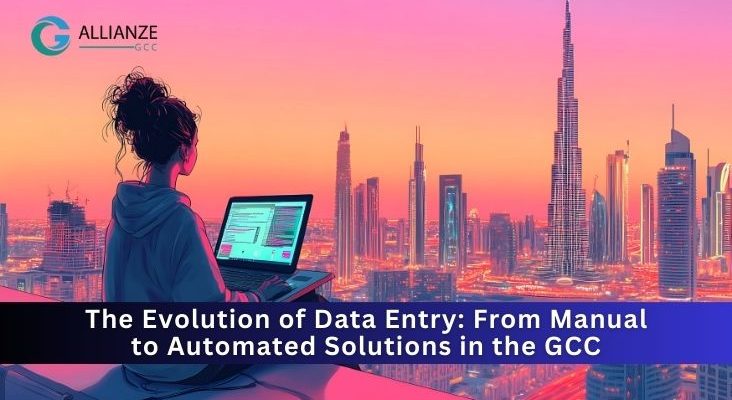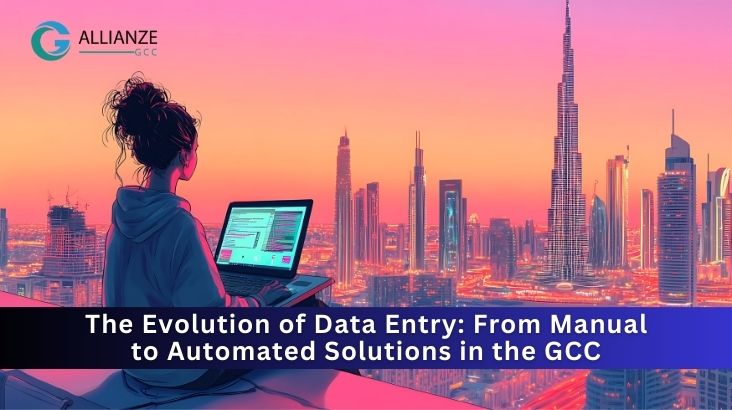
The Evolution of Data Entry: From Manual to Automated Solutions in the GCC
Across the ages, data entry has captured a complete evolution within the agile business. In the fairly marketed Environment of the Gulf Cooperation Council (GCC), diversification of the economies to enter smoothly the technological advancement is leading from manual to automated data entry variants bringing a phenomenal change to the normal functioning of companies. The evolution of data entry in the GCC is under discussion in this blog, and it brings forth the supposed hurdles, changes, and future of one of the significant tasks.
The Manual Era: Challenges and Limitations
Considered labor-intensive, data entry, for so long, has involved human involvement. Collected data would find themselves on paper forms or spreadsheets, as organizations worked manually to gather, collate and process that data. Employees would spend hours transcribing data, which would often culminate in neither clarity nor uniformity. This was horribly inefficient within the GCC-affiliated conditions, especially as industries like finance, healthcare, and logistics burgeoned.
By relying on manual processing techniques, productivity within organizations was hampered while the decision-making process became slow and tedious; inaccurate data meant wrong decisions that breached their way into bad decisions regarding the organization as a whole, thus hampering growth. Moreover, with the increase in data being generated by organizations in this region, manual entry was found, in this scheme of things, as least capable of catering to demand.
The Shift to Automation: A Game Changer
With the advancement in technology, GCC-based firms began to realize they needed efficient data entry solutions. Automating data entry processes created a watershed moment for how data was managed within firms. Software and algorithms-powered automated systems enabled faster data collection and processing by greatly lessening the time and efforts expended on data entry tasks.
Technologies Redefining Data Entry
Different technologies inside the cluster of GCC have greatly affected new developments in data-entry procedures for example;
Optical character recognition is the other method of reverting various documents such as scanned paper documents or PDFs into editable and searchable data types. By this, it might reason to butt itself to banking or health sector use for the purposes of smaller document processing.
Robotic Process Automation (RPA) is the use of RPA in repetitive tasks through software robot imitation of human agency. For instance, this is useful to data entry as it will automate the task of extracting information from several sources and entering it into systems or databases without any manual intervention whatsoever.
Artificial Intelligence (AI) and Machine Learning (ML) Being combined, these technologies work as mighty evaluators to learning and an excellent agent at analyzing data patterns and therefore bettering accuracy through time. Such technologies help in data authentication and verification, assuring high quality and reliability.
Cloud Computing: With the emergence of the cloud, data can be accessed anytime and anywhere. That means as organizations developed cloud-based automated data entry solutions, these then integrated other cloud solutions to enhance some processes.
Benefits of Automated Data Entry
The move towards automated data entry has already proven to add great value to organizations in the GCC:
Reduced Human Error-Free Data Entry: The manual entry of data involves a lot of room for human errors, and with the systems automated, there is relatively less of a risk.
Improved Efficiency: Compared to manual methods of entry, automated processes allow data processing faster, which enables the employees to concentrate on strategic responsibilities rather than data transcription.
Less Costly: Automated systems reduce labor costs of manual data entry and lessen the chances of errors, saving an organization a lot of money.
Enabling Better Decision-Making: Having access to correct data when needed allows for better decision-making by higher executives, thereby enabling them to meet their productivity goals.
Deciding on Solutions for the Future: On the Importance of Decisions
As the emphasis on cybersecurity increases, protecting the delicate data at the entry and storage levels will take precedence. Organizations need to pour substantial sums of money into secured systems to avert data breaches and automate the whole process.
Final Thoughts
The metamorphosis of data entry across the GCC from manual work to automated solutions is emblematic of the larger phenomena of digital transformation. With the use of advanced technologies, organizations will increase efficiency, save costs, and make better decisions. As we face forward, it will be most important for businesses to adopt these innovations to remain competitive within the marketplace. The journey from manual to automated data entry is not just about technology; it’s empowering organizations to use their data smartly for success in the future.





